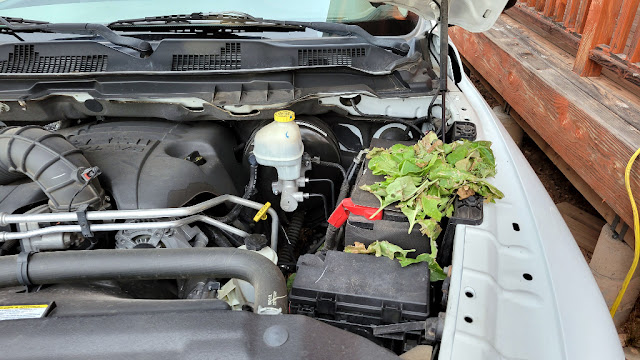Washhouse Electrical & A Little Paint
Washhouse Electrical & A Little Paint
by admin on May.28, 2006, under WashHouse
Power Distribution
May 27, 2006.
Power for the water pump comes from an on-board 12 volt marine battery. I know, a real deep-cycle would be better, but we had this available, and it works for now.
We had been hauling the battery back and forth to Mesa for each trip. I was visiting Harbor Freight in Mesa one day, and came across a 5-watt solar panel for $39.99
For that price, I said why not try it? I know it can only replace perhaps 2.5 amp-hours per day, but we are normally only here once a month, and usually only for a couple of days. So we have maybe 20 days of charging between visits. So that’s about 50 amp-hours of replacement charging between visits.
So we installed the solar panel on the roof. All of the books I read say that charging a 100 amp-hour battery at 300millamps will not overcharge it, no matter how long you leave it on. It supposedly has to do with internal losses in the battery compared to the very low charging rate. So we’ll see how it does this summer, with no charge controller in place.
Included in the control panel is a 300 watt pure sine wave inverter from Circuit Specialists in Mesa. It was somewhere around $119.
Power Distribution
May 27, 2006.
Power from the solar array enters through the brown wires near the bottom left. It goes through a 5-amp automotive fuse to the battery. This protects the wiring from burning up in the event of a direct short.
The top fuse is a 30-amp automotive type fuse on the output of the battery. Again this prevents the possibility of a fire, if something were to short on the panel. The battery is connected to the system with a 2-foot length of 12 gauge romex. This is heavy enough, considering the max load is around 25 amps. If the length was longer, I would worry more, but the losses in 2 feet are minimal.
There are a bunch of connections which are just jumpered for now. Later they will be replaced with connections to a 12 volt relay connected to a wall switch. This will allow us to turn off the entire 12 volt load, without running all the battery current through a long length of cable (which would be very lossy). There are also connections for 120 volt devices (like lights maybe). The pump is wired through the terminal block as well.
May 27, 2006
We noticed that the door had become weather beaten over the past winter, so we brought a quart of exterior latex paint to protect it again. It covered very nicely, and we used the remainder of the quart to paint the facia and protect it from the sun, too.






Comments
Post a Comment